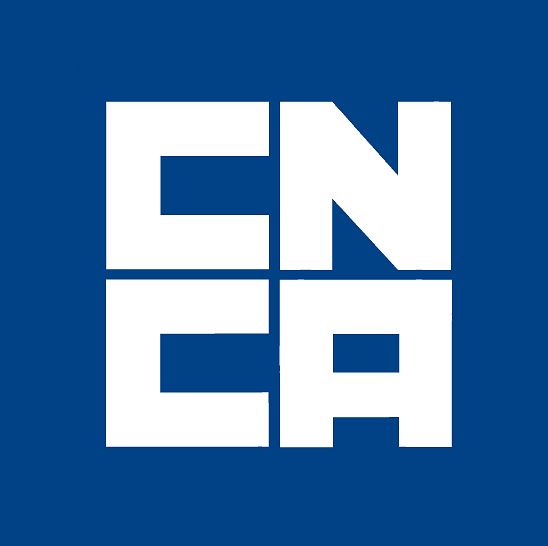China RoHS Certification
23. November 2022China RoHS Certification
China RoHS is a system that restricts the use of certain hazardous substances such as heavy metals (including lead, mercury and cadmium) in electronic components.
On May 16, 2019 the State Administration for Market Regulation (SAMR) and the Ministry of Industry and Information Technology (MIIT) published a joint statement on the reform of the China RoHS System called the “Arrangement for Implementing the Conformity Assessment System of the Restricted Use of Hazardous Substances in Electrical and Electronic Products.” All products listed in “The Standard Achieving Management Catalog (First Batch)” that are manufactured and imported into China after November 1, 2019 must comply with the “Implementation of the Conformity Assessment System”.
The 12 product categories currently affected are refrigerators, air conditioners, washing machines, electric water heaters, printers, photocopiers, fax machines, televisions, monitors, microcomputers, mobile handheld devices and cell phones.
The conformity assessment system to be carried out by the manufacturers includes two RoHS certification options:
- The RoHS voluntary certification (Voluntary Certification for the Restriction of Hazardous Substances in Electrical Appliances and Electronic Product) by (CQC China Quality Certification Centre)
- The RoHS self-declaration (Declaration of Conformity for the Restriction of Hazardous Substances in Electrical Appliances and Electronic Products) in the online system of the CNCA (Certification and Accreditation Administration of the People’s Republic of China)
In addition to one of the two certification procedures mentioned above, the manufacturer must complete the transmission of the technical documents and the certificate of conformity on CNCA’s public platform within 30 days of placing the product on the market.
Summary:
- The conformity assessment can be done by the voluntary certification process or the self-declaration process.
- All necessary documents must be uploaded to the public platform of the CNCA authority.
- Upon successful completion of conformity assessment, products that have undergone voluntary China RoHS certification will use the logo shown in Figure 1 (below) and products that have received a China RoHS self-declaration will use the logo shown in Figure 2 (below):
Figure 1 Figure 2
China RoHS Self-Declaration:
- The applicant will prepare the application documents.
- The applicant will prepare a test report.
The first method is that the applicant commissions the test laboratory to check the hazardous substances contained in the product according to the appropriate standard. The test laboratory may be an internal laboratory that meets the relevant technical requirements in accordance with CQC21-NV330-2019 Appendix 1 §9, GB / T 26572 and GB / T 26125, or a third qualified independent test laboratory (See list of test sites below).The second method is the conformity report prepared by the applicant on the basis of the determination of the hazardous substances of all components, parts, elements and raw materials. - The application and test report must be uploaded to the public platform of the CNCA.
- SAMR, MIIT and the CNCA will publish the results of the conformity assessment on the public platform of the CNCA.
The China RoHS Voluntary Certification by CQC
For voluntary RoHS China certification, there are four different certification modes:
- Mode 1: Parts, components and materials are suitable for Mode 1: Type Test (See below: Test Procedure and test laboratory) + Follow-Up Certification (See Item 5 of Mode 4)
- Mode 2: Parts and components are suitable for Mode 2: Sample Testing (See below: Test Procedure and test laboratory) + Follow-Up Certification (See Item 5 of Mode 4)
- Mode 3: The entire product and components are suitable for Mode 3: Optimized Testing (See below: Test Procedure and test laboratory) + Follow-Up Certification (See Item 5 of Mode 4)
- Mode 4: (details below): For all products that fall within the scope of this Implementation Rule CQC21-NV330-2019, the fourth mode applies: Sampling Test (See below: Test Procedure and test laboratory) + Initial Certification (See Below) + Follow-Up Certification (See Item 5 of Mode 4)
Explanations to the definitions:
Parts are structural units that can be shared with a simple tool, such as Power supplies and modules, etc.
Components refer to electronic parts or electronic devices that form a printed circuit board, such as a printed circuit board. Resistors, capacitors, integrated circuits, optoelectronic devices, etc.
Materials refer to the base materials that make up part or component products, such as metals, plastics, adhesives, coatings, etc.
The entire product is a device that can perform certain functions independently, such as a TV, a telephone, an electronic computer, a washing machine, etc.
The Procedure for Mode 4:
- The applicant must submit application forms.
- The sampling test must be carried out by the testing laboratory (see below).
- During the factory inspection there will be an examination of the manufacturer’s process and ability to limit the use of hazardous substances.
- Evaluation and approval of the certification results. The China RoHS certificate is valid for 5 years.
- Follow-up certification (this applies for all Modes 1-4)
The follow-up certification includes random sampling testing (which may be required to be done in China) and a possible factory audit whereby the auditors will inspect the use of hazardous substances and effective monitoring of the certified products.The CQC will arrange for a random sample inspection of certified products at least once a year. The samples can be taken from production lines, warehouses, markets, customers, etc.The frequency of the factory audit is based on different product categories and requirements of the certification authority.The certification body must conduct a factory audit if one of the following occurs:
(a)Before the certificate is received, there is a deviation in the sample test.
(b)There is a deviation in the sample inspection after receipt of the certificate.
(c)Sufficient information indicates that the manufacturer may have product conformity problems due to changes in the organizations management system.
(d)The certified products are not qualified for quality control in different countries and locations.
(e)If it is reported that the certified manufacturer is not compliant with the regulations or if a deviation is reported and confirmed that the applicant / manufacturer / producer may be at fault, then for any of the above cases the CQC will increases the frequency of the factory audit inspection. - The certified company may maintain the China RoHS certificate and continue to use the certification logo if the follow-up certification is passed.Typically, in the event of deviations or non-conformities the factory has the opportunity to take the necessary measures to remedy the deviations within 3 months. If the deviations are not resolved within the time limit the certification body will suspend or revoke the certificate according depending on the situation.
Implementing rule for CQC voluntary China RoHS certification is CQC21-NV330-2019:
| Category name | Subcategory Certification | Product name | Implemention rule |
| 330Voluntary Certification | 330101 | Refrigerators | CQC21-NV330-2019 |
| 330102 | Air Conditioners | ||
| 330103 | Washing Machines | ||
| 330104 | Electric Water Heaters | ||
| 330105 | Printers | ||
| 330106 | Photocopiers | ||
| 330107 | Fax Machines | ||
| 330108 | Televisions | ||
| 330109 | Monitors | ||
| 330110 | Microcomputers | ||
| 330111 | Mobile Handheld Devices | ||
| 330112 | Cell Phones |
The following documents also apply:
“Arrangement for Implementing the Conformity Assessment System of the Restricted Use of Hazardous Substances in Electrical and Electronic Products” for China RoHS self-declaration and voluntary certification. Document No. 2019-1558084308938 of 16 May 2019.
Test Procedure for Voluntary Certification:
The certification body must specify the requirements for the certified products in the Implementing Regulation, and the sample must cover a model and the materials from a certification unit. The sample will be sent by the applicant in accordance with the requirements of the certification authority.
- The limit values must comply with the GB/T 26572 standard.
- The testing procedure complies with the implementation rule CQC21-NV330-2019 §3.3.2.3 and the standard GB/T 26125.
The China RoHS Directive restricts the use of the following six categories of hazardous substances:
- Cadmium (Cd) and its compounds: 0.01%
- Mercury (Hg) and its compounds: 0,1%.
- Lead (Pb) and its compounds: 0,1%.
- Hexavalent Chromium (Cr6 +) and its compounds: 0,1%.
- Polybrominated Biphenyls (PBB): 0.1%;
- Polybrominated Diphenyl Ethers (PBDE): 0.1%
Currently Approved Testing Laboratories:
- The following testing laboratories are currently approved for China RoHS certification:
- Suzhou Electrical Apparatus Science Research Institute Co., Ltd.
- Beijing Products Quality Supervision and Inspection Institute
- Shenzhen Academy of Metrology & Quality Inspection
- Chongqing Products Quality Supervision and Inspection Institute
- Wuhan Products Quality Supervision and Inspection Institute
- Hangzhou Products Quality Supervision and Inspection Institute










